Vintage Vinyl Records
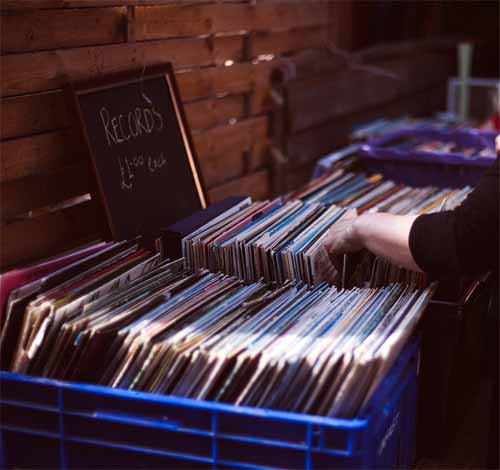 After a twenty year period of relative scarcity and public indifference, sales of vinyl records are back and have been increasing annually for more than a decade. Nearly all new releases by popular artists are now available in vinyl format, as well as in downloadable form or as compact discs.
After a twenty year period of relative scarcity and public indifference, sales of vinyl records are back and have been increasing annually for more than a decade. Nearly all new releases by popular artists are now available in vinyl format, as well as in downloadable form or as compact discs.
While sales of new vinyl records are increasing as more people become familiar with the format, buyers are also turning towards vintage vinyl records as a way of adding to their record collections. In fact, there are currently more than five million records for sale on eBay, and most of those are vintage vinyl records.
The appeal of new records would be immediately obvious – you get a pristine copy of your favorite artist’s newest release. But why would people want to buy vintage vinyl records? What is the appeal of vintage vinyl records to the average buyer or collector?
In this article, we’ll explain why so many buyers are interested in vintage vinyl records and why, for many collectors vintage vinyl records are the only kinds of records that they will buy.
Browse by Category
Click any of the links below to jump to each category:
Sound Quality
Extra Features
Different and/or Better Artwork
Different Versions
Availability
Increasing Scarcity
Collectability
Price Advantages
New Discoveries
Vintage Vinyl Records Conclusion
Featured Products
-
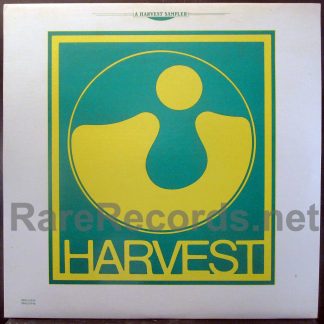
Pink Floyd (Kate Bush) Harvest Sampler 1978 promo-only U.S. LP with rare Pink Floyd track
$75.00Free U.S. shipping! A U.S. promotional sampler LP by Harvest Records featuring a rare track by Pink Floyd as well as songs by Kate Bush and others.Add to cart -
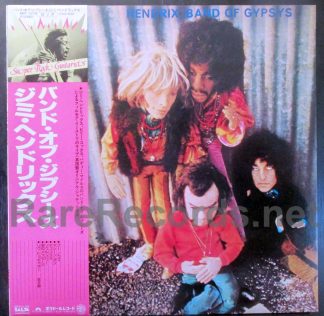
Jimi Hendrix – Band of Gypsys Japan LP with rare puppet cover and obi
$125.00Free U.S. shipping! A 1977 Japanese pressing of Band of Gypsys by Jimi Hendrix, including the original obi and featuring the rare "puppet" cover.Add to cart -
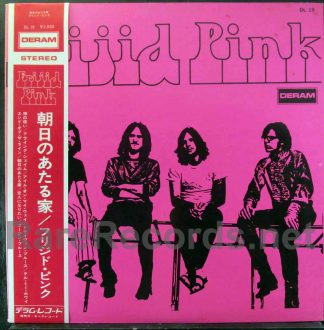
Frijid Pink – Frijid Pink rare original white label promo Japan LP with obi
$495.00A rare original Japanese pressing of the self-titled debut LP by Frijid Pink.Add to cart
Click here to view our selection of vintage vinyl records.
Sound Quality
There are many reasons why the average record buyer or collector would be interested in vintage vinyl records, and we’ll get to all of them in this article.
Any reason for preferring vintage vinyl records over new ones is valid, of course; buyers are free to buy whatever they personally like. For many buyers, however, the main reason for buying vintage vinyl records rather than new ones is the sound quality.
The source material for nearly all commercially released recordings is magnetic tape. While a lot of recordings made in the past 30 years were made using digital tape, which can be copied repeatedly without degradation, most of the recordings ever made (and many new ones) used analog tape.
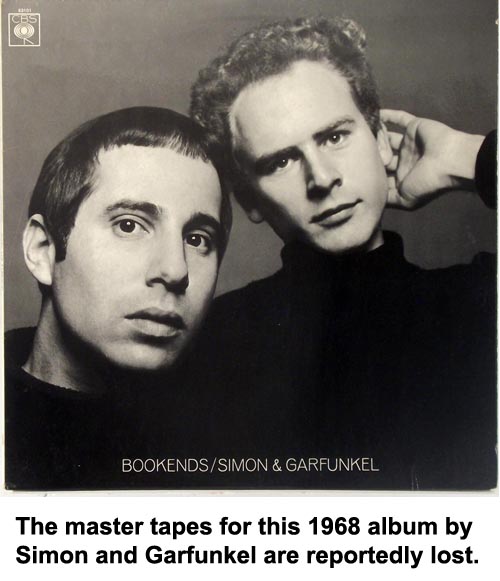 Analog tape does not age well; over time the sound can degrade due to improper storage. Poor storage can cause the coating on the tape that contains the recording to flake off, rendering the tape useless.
Analog tape does not age well; over time the sound can degrade due to improper storage. Poor storage can cause the coating on the tape that contains the recording to flake off, rendering the tape useless.
Of course, copies of analog tape can be made, just as with digital tape.
Unlike digital tape, however, the sound quality of analog tape gets worse with each subsequent copy. A copy of an original tape will not sound as good as the original. A copy of that copy will sound worse, and so on.
The appeal of vintage vinyl records in this regard is that original pressings of albums were made from tapes that were new at the time the records were pressed. Newly-pressed copies of those same records may be mastered using tapes that are copies of copies of copies.
In the case of some older albums from the 1950s and 1960s, the original master tapes may no longer even exist, and new pressings of these older albums may have been mastered from the best source that’s currently available. While those sources may be quite good, they’re likely not as good as the tapes that were used to press the albums when they were first released 40 or 50 years ago.
While current record manufacturing techniques are quite refined and the quality of the vinyl used in modern pressings is quite good and is capable of producing exceptional sound, the final product is only going to sound good if the record was mastered from a good source.
In the case of some classic albums, the record companies have taken good care of the original master tapes, and current pressings of albums by a lot of artists from the 1950s and 1960s sound just fine. Albums by the Beatles, for example, still sound great, as EMI Records has taken good care of the tapes over the years.
In other cases, the results can vary widely. Columbia Records did not take particularly good care of the master tapes for Simon and Garfunkel, for example, and even though their albums stayed in print for many years after their original release in the 1960s, their albums tended to sound worse and worse over time.
If you’re buying vintage vinyl records and get early pressings of whatever albums you’re seeking, you’ll know that the records were mastered from tapes that were new at the time the records were made and that the tapes used to master the albums were not copies of copies or copies.
In many cases, vintage vinyl records simply sound better than new ones.
Extra Features

Many classic albums are again available in the vinyl format, making it easy for buyers to grab albums by the Doors, Jimi Hendrix, or the Beatles. With the rise of Internet marketing, you can even have new copies of albums these and other artists delivered to your door.
While those new pressings have their advantages, many of them will not include the extra features that once accompanied albums. It was once fairly common for albums to include such extras as postcards, lyric inserts, custom inner sleeves with liner notes or lyrics, or even postcards.
Here is a partial list of albums that originally included a poster when they were new:
- Beatles – The Beatles (aka The White Album)
- David Bowie – Space Oddity
- Black Sabbath – Master of Reality
- Jimi Hendrix – Smash Hits
- Pink Floyd – The Dark Side of the Moon
- George Harrison – All Things Must Pass
- Cream – Goodbye
- Grand Funk – Live Album
- Ricky Nelson – More Songs by Ricky
- Jimmy Clanton – Jimmy’s Happy/Jimmy’s Blue
Other vintage vinyl records included different sorts of inserts. The 1977 Kiss album Love Gun, for instance, included a special insert that could be assembled to form a cardboard gun. The second album by Country Joe and the Fish included a board game. Pink Floyd’s The Dark Side of the Moon came with two posters and two stickers.
We’re an American Band by Grand Funk included a set of stickers and the record was pressed on yellow vinyl, as well. Tim Buckley’s Greetings from L.A. had a section of the cover that was removable and could be used as a postcard. This was also true of Duty Now for the Future by Devo.
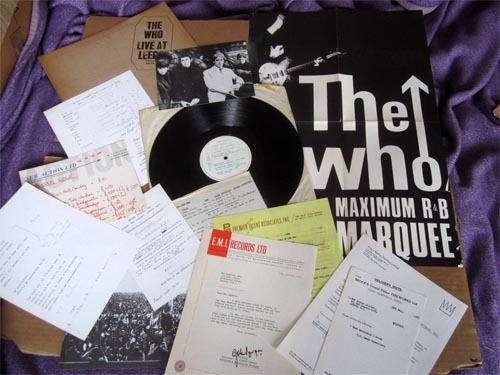
Live at Leeds by The Who came with a set of 12 different paper inserts, including a reproduction of their contract to perform at Woodstock.
While vintage vinyl records often included these sorts of interesting extras, most recent reissues do not, usually because of cost concerns. That was also true years ago; many vintage vinyl records that included such things as posters often included them only for a short time after the record was originally released, making them somewhat scarce today.
Even original copies of vintage vinyl records that did include such extras as posters can be hard to find complete today, as many of those posters were removed from the album cover and hung on the buyers’ walls. Eventually, those posters all came down from the walls, but they rarely found their way back into their album covers.
Part of the fun of shopping for vintage vinyl records is to find those albums that came with extras and trying to find a copy that’s complete.
Different and/or Better Artwork
 Album art is another reason why a buyer might prefer vintage vinyl records to new ones. Of course, an album, by sheer advantage of larger size, will provide better artwork than a compact disc, and certainly better than a download, which comes with no artwork at all.
Album art is another reason why a buyer might prefer vintage vinyl records to new ones. Of course, an album, by sheer advantage of larger size, will provide better artwork than a compact disc, and certainly better than a download, which comes with no artwork at all.
But there are advantages of vintage vinyl records over new pressings when it comes to artwork, as well. We’ve previously discussed how master tapes can be lost, forcing record companies to settle for not-as-good reproductions. The same is true of album artwork.
Artwork gets created, and then stored in file cabinets, and sometimes the artwork in those file cabinets gets misplaced, thrown away or accidentally destroyed.
When that happens, new artwork has to be created, usually by using an existing album as source material. This can result in new pressings with album covers that have poor quality artwork. The cover art may be the wrong color, or the images may be blurrier than they were on the original.
A good example of this is Bob Dylan’s 1966 album Blonde on Blonde. At some time in the past, the original artwork for the album was lost, and copies of the album made since the 1970s have a blurry, faded photo of Bob Dylan on the cover. Collectors of vintage vinyl records would likely prefer to find an original pressing that had better artwork. In the case of Blonde on Blonde, original 1966 pressings included a photo of actress Claudia Cardinale on the inside of the cover which was later removed for legal reasons.
Most albums sell best when they’re first released, and as sales tapered, record companies would often change cover art to save money. In some cases, vintage vinyl records were released with gatefold covers that were eliminated in later pressings due to cost concerns.
The album that Lindsey Buckingham and Stevie Nicks made before joining Fleetwood Mac, Buckingham/Nicks, is a good example. When first released in 1973, the album had a gatefold cover and then went out of print due to poor sales.
Another example is the 1970 LP Let It Be by the Beatles. That album was originally issued with a gatefold cover, but the album went out of print in the mid-1970s. When it was reissued in the 1980s, the album was released without the gatefold cover. Collectors of vintage vinyl records will likely prefer the original version.
The 1971 LP L.A. Woman by the Doors had a cover with a cellophane “window” on the front with the images of band members on it. The yellow paper inner sleeve gave the clear cellophane a yellow appearance. Newer pressings of this LP simply have the image of the band printed on the front cover against a yellow background.
A few years later, after the duo became famous, the album was reissued, but without the gatefold cover. There are many similar examples, and while some current reissues of such albums do include the original cover art, collectors tend to prefer the gatefold covers that often came with vintage vinyl records.
Different Versions
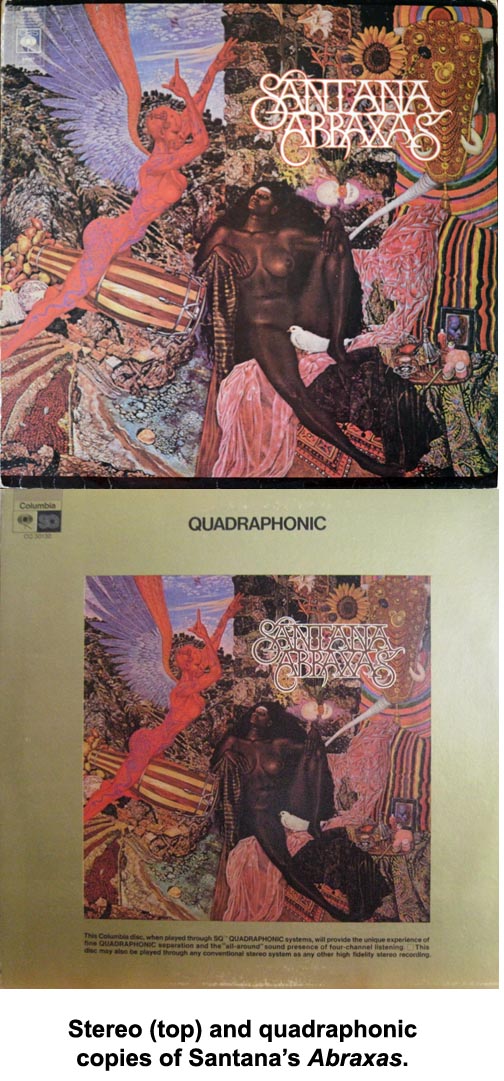 While a surprising number of classic albums are now available again in the LP format, they’re not necessarily available in all of the different versions that may have previously been available. Vintage vinyl records released between 1958 and 1968, for example, were usually released in both mono and stereo. In the early to mid-1970s, many albums were also briefly available as four-channel quadraphonic pressings.
While a surprising number of classic albums are now available again in the LP format, they’re not necessarily available in all of the different versions that may have previously been available. Vintage vinyl records released between 1958 and 1968, for example, were usually released in both mono and stereo. In the early to mid-1970s, many albums were also briefly available as four-channel quadraphonic pressings.
Mono and stereo versions of the same album usually had different mixes, and the two albums often sounded considerably different from one another. Sometimes, the mono version of a particular record might lack backing vocals that could be heard on the stereo version, such as in “Pleasant Valley Sunday” by the Monkees or “Blue Jay Way” by the Beatles.
Sometimes, the mono and stereo versions of the same album might feature different versions of one or more songs. The quadraphonic pressing of Volunteers by the Jefferson Airplane has different versions of several songs from the stereo version. This is also true of The Allman Brothers at Fillmore East, a 1971 live album that has two different versions of songs on the quadraphonic version than those found on the stereo version. One of those songs, “Whipping Post, takes up all of side four!
Record companies discontinued releasing albums in both mono and stereo in 1968. Over the previous three or four years, more people had been purchasing stereo turntables and began to show a preference for stereo records over mono records. When sales of mono LPs reached the point where making them as a separate product from stereo records was no longer economically feasible, record companies discontinued them.
Since the elimination of mono records in 1968, most albums that were originally available in both stereo and mono have only been available in stereo versions. There have been a few mono reissues in recent years of titles by prominent artists, but for the most part, collectors who are interested in having albums by their favorite artists from that era in both mono and stereo are going to have to find the mono version by buying vintage vinyl records.
Some vintage vinyl records were originally available as limited edition colored vinyl pressings or picture discs. While it’s true that some of these records have been reissued this way, most vintage vinyl records that were originally sold that way are not available in those formats as new pressings today.
Availability
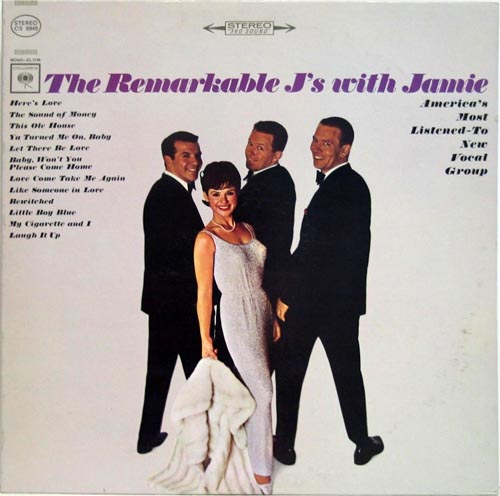
Sometimes, the reason people are looking for vintage vinyl records is a simple one – a matter of availability. While there are lots of albums currently available in the vinyl format as new releases (one large retailer currently lists 19,802 new vinyl titles in stock) that hardly represents the entirety of what collectors or music buyers might be seeking.
When companies choose to reissue older albums, they’re interested in sales. If they aren’t sure that they can sell several thousand copies of a given title, then they’re not going to spend the money to press the records.
That’s fine, if you’re interested in albums by the Beatles, Bob Dylan, Elvis Presley, or Rush, or Led Zeppelin. But if you’re interested in any one of a thousand other artists, you may be out of luck and vintage vinyl records will likely present your only opportunity to buy that music in the vinyl format.
Fortunately, not all artists are equally collectible, and finding vintage vinyl records by the majority of artists isn’t that difficult, nor is it that expensive. It would be nice if every album ever released was currently available for purchase as new vinyl, but market economics make that highly unlikely. If you’re a fan of Rosemary Clooney, Martin Denny, or Gary Lewis and the Playboys, you’ll likely have to settle for vintage vinyl records.
Increasing Scarcity
It’s a mistake to assume that if something is readily available, it will always be readily available. That’s certainly the case with vintage vinyl records. There was a time, not all that many years ago, when one could usually find boxes of records at yard sales, flea markets and thrift stores.
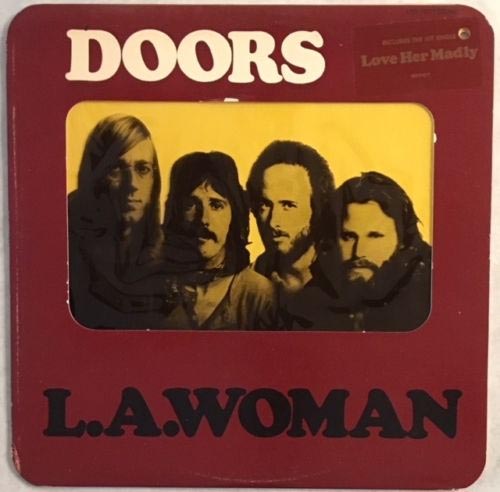
While vintage vinyl records still occasionally show up in such places, they do so far less frequently and in far smaller quantities. It’s been several years since we’ve seen vintage vinyl records for sale at any yard sale. While we do still occasionally see them at thrift stores, we don’t see them as often, and certain genres, such as jazz and rock, rarely turn up there anymore.
There was a time when we used to see albums by Led Zeppelin or the Beatles at thrift stores, for example, but these days, everything seems to be easy listening. Part of the reason is that people who have such records usually don’t want to donate them to charity; they’d rather give them to friends or family members or sell them on eBay.
Buyers are aware of this, and they know that you’ll have better chances of finding the vintage vinyl records that you want if you buy them now, rather than waiting until later. We know many buyers who would rather spend their limited funds on vintage vinyl records than new ones, simply because the older titles they’re looking for may not be available a year or two from now.
Collectability
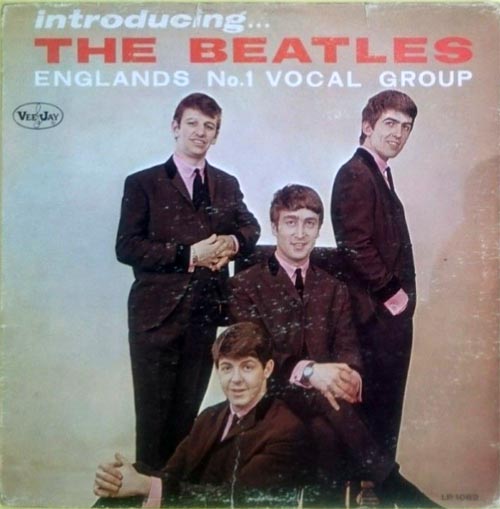
As with any other limited commodity, people collect records, just as people collect stamps, coins, or Picasso paintings. While there are certainly new releases that are collectible, particularly as many new releases are limited editions, most record collectors have collections that consist largely of vintage vinyl records.
That’s certainly going to be the case with anyone who collects any major artist – the Beatles, Elvis, Led Zeppelin, or the Rolling Stones, for example. These are artists that are well-established and who released their first records decades ago.
Collectors who are interested in those artists and others of the same era will almost always be interested in obtaining original pressings of at least some of those records. Sure, you can buy the entire Beatles catalog, right now, in the form of new, still sealed records.
But purchasing or owning a copy of Sgt. Pepper’s Lonely Hearts Club Band that was pressed and released in 2018 isn’t the same thing as owning a 1967 original pressing. There’s an indefinable quality to vintage vinyl records that appeals to collectors, and we’ve met many collectors who were interested in owning original copies of rare albums, even if they were in poor condition.
They might have a new copy to play, but the still like having original copies of vintage vinyl records on their shelf and they might very well have a beat up 1967 pressing of Sgt Pepper’s Lonely Hearts Club Band on the shelf, right next to a new one that they bought last year.

There can certainly be price advantages to buying vintage vinyl records rather than buying new ones. For the most part, second hand records will cost less than new ones. A new copy of just about any album is likely to be priced at $20 or more, where used records can often be purchased, even in stores, for less than $10, and sometimes for $5 or less, depending on title.
Furthermore, it’s still possible to buy vintage vinyl records at thrift stores, flea markets and yard sales, though as we mentioned above, vintage vinyl records are less common in such places than they used to be.
It goes without saying that collectible vintage vinyl records are not going to be less expensive than new ones. A mint original pressing of that Sgt. Pepper LP by the Beatles is certainly going to cost a lot more than a new copy of a current reissue.
That’s true of many collectible albums, but the truth is that most of the records ever made are not particularly collectible, and records that are not particularly collectible usually comprise the bulk of anyone’s record collection.
We personally own about 2000 albums, and while we do own a number of rarities, we also own hundreds of vintage vinyl records that would likely sell for less than $5 in any marketplace. That’s not to say that we don’t like those records, but not all records, not even all good ones, are valuable.
That might be because they’re records that are largely unknown, records by artists who have mostly been forgotten, or albums that sold so well when they were new that no copies of them are particularly valuable today.
If you’re buying collectible records, you’ll pay more for original pressings than you will for new ones. But if you’re just buying music in general, buying vintage vinyl records will likely save you a lot of money over buying new ones, and that’s assuming that new copies of the titles you’re seeking are even available.
New Discoveries
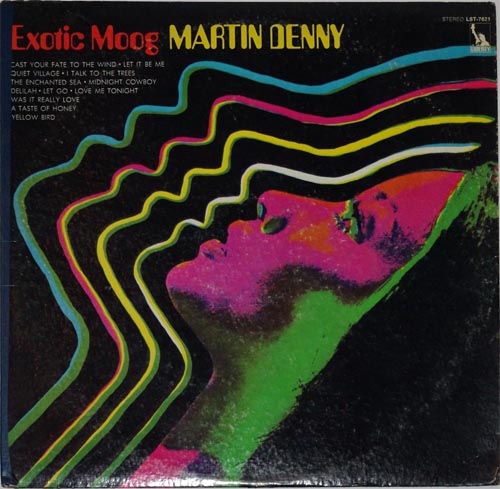
A final advantage of vintage vinyl records over new ones is the ability to affordably discover new music by artists you might otherwise not have heard.
With the price of new vinyl records averaging about $20 per title, few buyers are likely to grab a title by an unknown artist on a lark, just to see how they sound. Most buyers don’t have enough disposable income to buy records by artists with which they are unfamiliar, so they stick with what they know.
But as we have previously mentioned, most vintage vinyl records are priced affordably, and any well-stocked store that sells second hand records will likely have hundreds or even thousands of affordably priced vintage vinyl records.
The same is true for thrift stores, flea markets, and yard sales. When you find records that are for sale at more affordable prices, you are in a better position to buy something with which you aren’t familiar just to see if you like it.
We’ve purchased countless records over the years that were unknown to us at the time, but had covers that suggested that they might be interesting and prices that were reasonable. Some turned out to be great finds and others not so much. But that’s part of the fun of buying vintage vinyl records – you never know what you’re going to find and sometimes, you end up discovering new artists and genres of music that you might never have bought new.
Vintage Vinyl Records Conclusion
There are reasons for why people buy anything and that applies to cars, houses and vintage vinyl records. While there are lots of good reasons to buy new ones, there are also a lot of compelling reasons to buy vintage vinyl records.
Vintage vinyl records are often more affordable than new ones. There are thousands of titles that aren’t available new anymore and are only available for purchase as vintage vinyl records.
There are many cases where vintage vinyl records offer better sound than newer releases, and that’s particularly true of older recordings where the master tapes may be damaged. Some vintage vinyl records may have originally been sold with posters, booklets or other extra features that newer reissues don’t include.
And finally, vintage vinyl records can offer you the opportunity to find and discover new music and artists that you previously knew little about.
There are times to buy new records, and you’d certainly want to do that if the album in question is a new release. After all, there aren’t going to be any “vintage” versions of an album that came out for the first time last month. But for many buyers, vintage vinyl records offer a lot of advantages over new ones.
While we do have a few new titles in our store, most of the records that we sell are vintage vinyl records.











